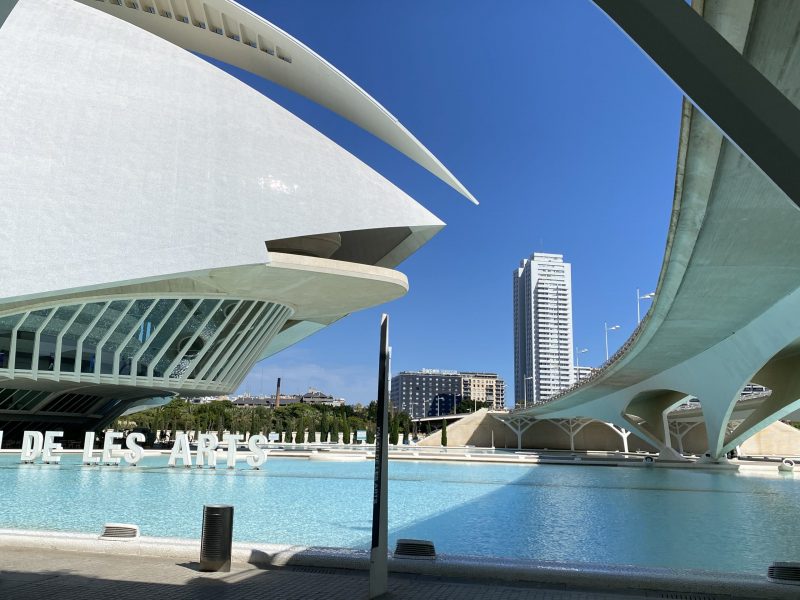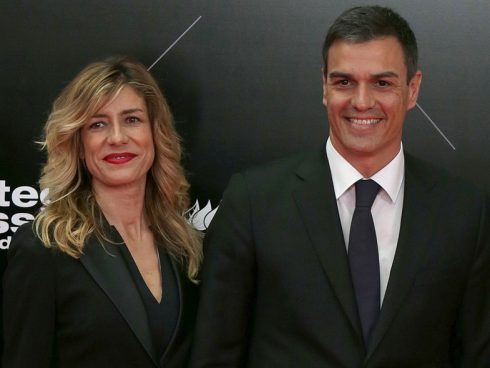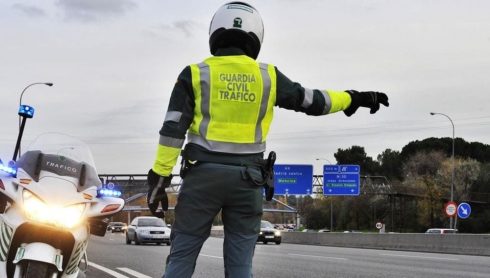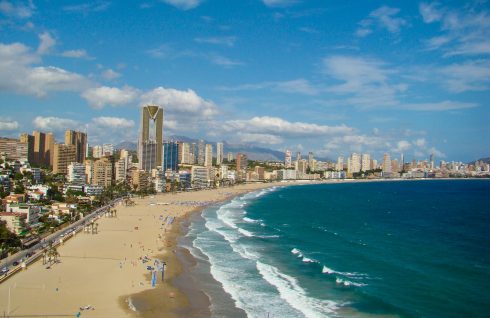IT’S undoubtedly Valencia’s unique selling point, a surreal city of swooping white concrete and glass undulating along the banks of the old Turia riverbed like a CGI creation from Star Wars.
Calatravaland?, as it’s sometimes called, was envisaged at a time when the cities of Europe were vying to make their mark on the international stage.
Once, majestic cathedrals were erected to show a city’s worth. In 20th century Spain it was the spectacle of structural gymnastics like the City of Arts and Sciences that changed the city skyline.
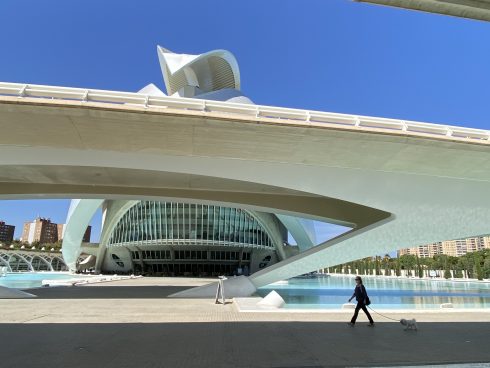
Similarly to its medieval counterparts it was built by the taxpayers and it continues to be maintained by the same today. So is it worth it?
?La Ciutat de les Arts de les Ciencies?, to give it its proper Catalan name, is truly a sight to behold. Tourists flock in their droves to visit this spectacular vision which brought in €314.4 million in 2018 and has raised Valencia’s cultural status to near that of Barcelona and Madrid.
Each year (with the obvious exception of 2020), it attracts tens of thousands of international tourists enticed by events such as free MTV concerts headlining major acts like The Cure and The Arctic Monkeys.
In many ways this is important, with cities attracting the biggest mass migration of our times. Their benefits are power in numbers, jobs, municipal facilities, hospitals, schools and the arts. Their downside, overcrowding, rush-hour traffic, inequality, lack of access to facilities and suburban malls killing local trade.
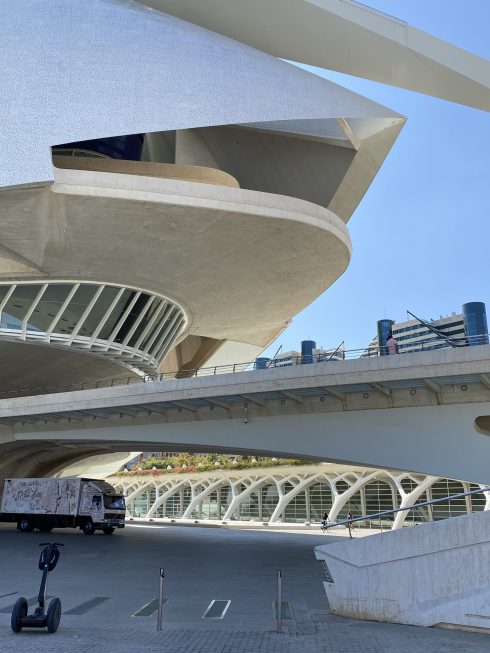
Good sustainable management of urban spaces is definitely the key to their success. The ‘build it and they will come’ philosophy has worked to a point creating new spaces and allowing new neighbourhoods to gain a foothold within the city limits, such as Calatravaland, which sits just outside the city centre.
However, it is my belief that this over-priced development was created at the expense of the existing urban structure, which has been sadly neglected for a quick return. In particular, the old town of Valencia – ?Ciutat Vella – ?where I reformed my own flat and have been living and working since 2003.
Did Valencia need Calatravland?
It was the PSOE who envisaged it in the late 80’s, to the condemnation of the PP. But when the party took power in the mid 90’s the scheme mushroomed to even greater heights.
As a result of the ‘too big to fail’ syndrome, costs spiralled four-fold from the original budget of €300 million to well over a billion.
During its construction the old town was largely neglected and the rot set in, with drugs and anti-social behaviour becoming more commonplace. Just think what the city could have done with this amount of money?
Sure, the architecture is impressive… The Palau de les Arts ?dominates the site allowing the city to host major international events. But after the obligatory photos to show off to your social media friends, what else does Calatravland offer? ?L’Hemisfèric, ?a cinema, albeit 3D; an arboretum and disco where young ?Valencianos strut their stuff, and an opulent opera house where the moneyed older demographic splash the cash, paying up to €130 a seat.
But behind the glitz, there are glitches. It’s been prone to flooding in the past. And what is the true value of a science museum where the permanent exhibition hasn’t changed in 20 years. To a scientist, maybe that’s the nature of permanent, but only now are there new exhibitions in the pipeline.
Upwards and onwards to Calatravaland’s crescendo, a mussel-like coruscation of a building yet to be finished, closed to the public after hosting a couple of tennis matches and a fashion show. The Àgora, a classic oxymoron populated by ghosts. It too is to get a facelift by bringing the Caixa Forum here to match Madrid and Barcelona.?
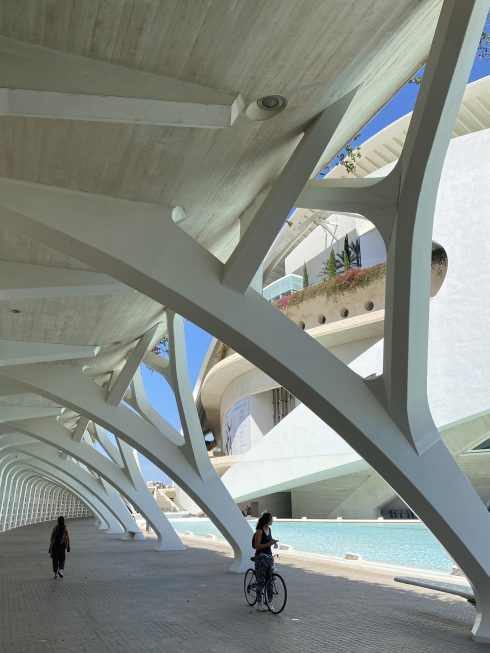
This can only be topped by the twisted apartments in the sky project (design fees €15 million) that is still on hold, although housing may well give Calatravaland back some much-needed function over form. Therefore, do we blame the architect for all its shortcomings? Being one myself, I stand in solidarity with my fellow professional and say no.
Calatravaland is a product of its time and the cultural psyche – Nero fiddled while Rome went down the pan. It may have satisfied our immediate craving for new, shiny objects to raise us up, while giving us a quick fix of so-called high culture. The big question remains, what is needed to give it purpose in an age where sustainability is the new buzz word.REDUCE, reuse and only then recycle.
After the tourists have overdosed on Calatravaland, the magnet which may have drawn them to Valencia in the first place, they must be enticed to venture further afield and discover its polar opposite, the old city where people live and work and raise their kids.
A pleasurable bike ride along the old riverbed, the amazing green lung of the city, leads to a world of total contrast to Calatravaland. You can still meander along the narrow streets, albeit many are interspersed with vacant lots, like missing teeth, and decaying buildings covered in green construction mesh
But beneath the cobbles, medieval and Moorish imprints still underpin the core of the city, and under these the Roman city that began it all. This is the Rome to Calatravaland’s Nero.
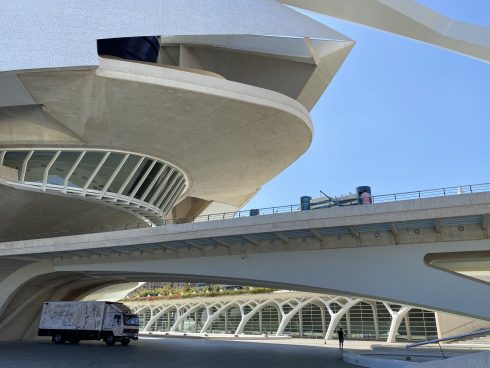
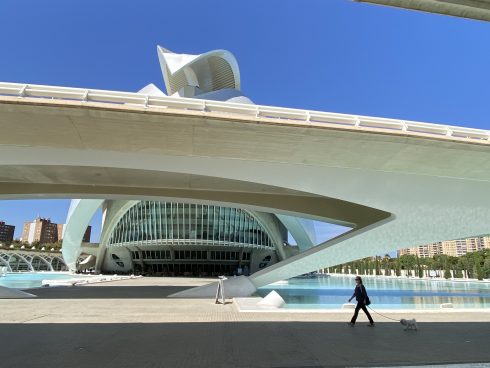
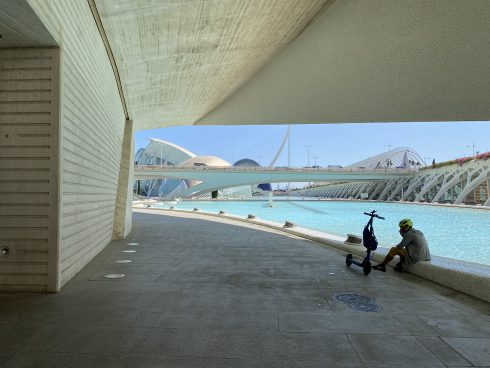
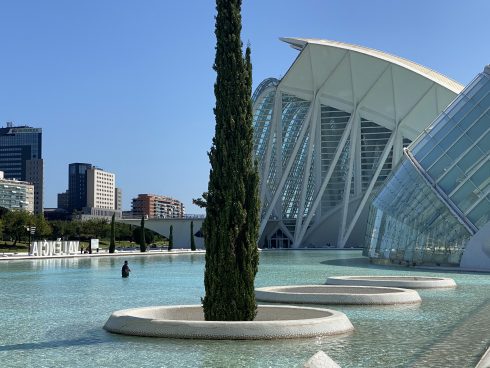
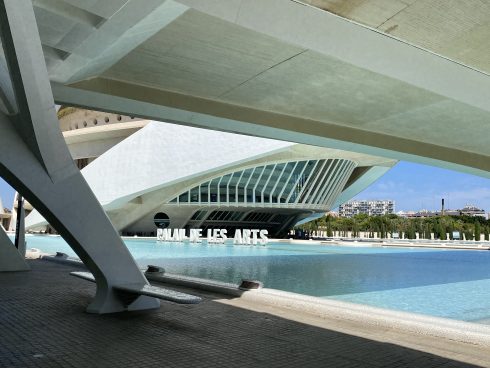
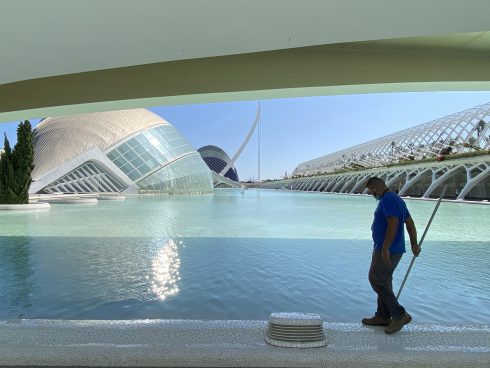
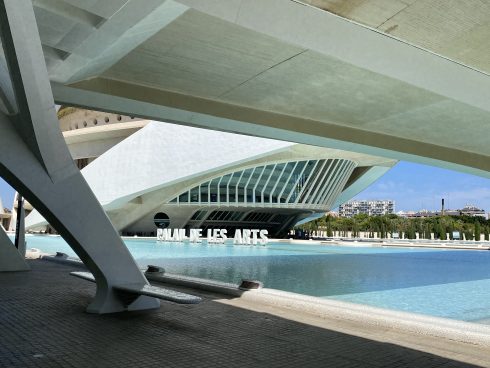
Nowadays, the streets tracing the old city walls are almost devoid of traffic and manage to retain their tranquil charm. The grand palaces with their quiet and reclusive internal courtyards and the less noble buildings that tie in the whole urban fabric give a real sense of place. This has been a gradual evolution over millennia, not one man’s vision built over a few decades, devoid of the life blood of a living, breathing city.
So why is the old town not being treasured as it should be and what will be the consequence of this?
Private development here is at a standstill if not regressing, stifled by red tape and the additional costs and restrictions that come with developing in a historic neighbourhood. There are new build opportunities elsewhere in the city that are more lucrative and less hassle.
Like many cities, there is also an element of antisocial behaviour in some areas, especially in August when most people leave the highs of 40 degrees celsius for the beach or mountains and a less discernible element frequents the area, including the most vulnerable of society, the homeless, drug addicts and drunks. Although it’s not as bad as the 1980s and 90s when a heroin epidemic left most of the old town and the riverbed off limits.
Before the pandemic, tourist rentals and noise pollution plagued the sleep of residents and the building works, though desperately needed, caused tension between home owners within apartment blocks.
Moving forward, how can the character of the old town be preserved whilst being regenerated, along with the wider city (?La Cabañal, Benimachet, Russafa, Patriax)?? Some measures have been put in place to address the situation, for example, public consultation. Unfortunately, this is slow and small scale as the town hall is strapped for cash.
Some positive initiatives have also borne fruit, such as the traffic engineering project to reduce vehicles and increase bike travel city wide. The old town has benefitted the most from this and is now an almost traffic free zone.
But it is time that neglected plots were addressed. Redesign would encourage community ownership of neighbourhoods through ‘passive surveillance’. For example more semi-private spaces are needed to protect private domains, such as simple front gardens for existing ground floor social housing projects. All this would be for the greater good, creating an environment for everyone, as Calatravaland continues to draw in the tourists to the wider city.
In conclusion, is Calatravaland, just too modern? Is that why it’s so intriguing, because no one really understands it? In my opinion the main difference is that ‘it just ain’t got soul’.
No doubt in architectural terms it’s a marvel, a sculpture to behold. But at night it dies a death, becomes cold, clinical, without depth. It’s people inside looking out, unlike the old town which is outside looking in.
The charming ruin of the much neglected ?ciutat vella? is a more human scale, an area that carves out places as opposed to Calatravaland being objects within space. The old town is given life by its inhabitants and, even through this surreal time, it continues to delight and give hope for the future.
The pandemic has given us pause for thought. Let us use this opportunity to focus on our built heritage and reinvigorate what we have here in Valencia, the existing old and the new.

